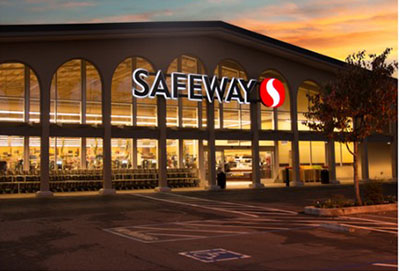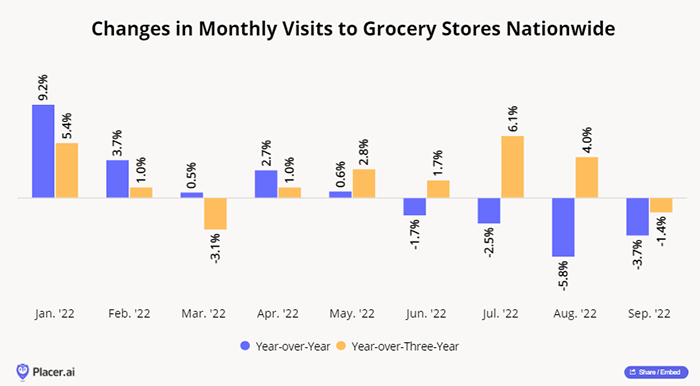
Brick-and-Mortar Groceries Show Resilience

(A Safeway grocery store in Oakland, Calif. Photo courtesy Safeway.)
The grocery sector continues to show impressive resilience despite inflation, supply-chain issues and labor shortages, reported Placer.ai, Los Altos, Calif.
“Many leading grocers have found ways to thrive and continue driving visit growth despite the challenges,” Placer.ai said in Brick-and-Mortar Grocery’s Ongoing Resilience.

The report noted last year’s supermarket foot traffic regularly outpaced pre-pandemic levels, which suggests the industry is holding on to its pandemic gains. “It is also critical to note that, although visit growth has slowed down in recent months, median visit duration has increased, which may mean that the decline in visit numbers does not necessarily mean a drop in purchasing,” Placer.ai said.
In the first half of 2022, as the shock of rising gas and food prices hit the country, many shoppers opted for the closest grocery store to reduce fuel expense. “But with gas prices down from their second-quarter highs, some shoppers are now driving the extra mile–or 10, or 20–to find specialty food products,” Placer.ai said. “In particular, consumer segments who are willing to spend more on organic or premium products also seem willing to spend more on gas and drive longer distances to grocers who carry these specialty foods.”
Inflation, a stretched supply chain and labor issues created a unique set of challenges for the grocery sector. “Yet, many grocery retailers are successfully attracting shoppers and increasing their foot traffic despite the tightening of consumer budgets,” the report noted. “Whether by offering a shopping experience unmatched by other grocers or providing a low-cost option to those looking to travel to save on their grocery bill, the sector has plenty of room for growth.”
